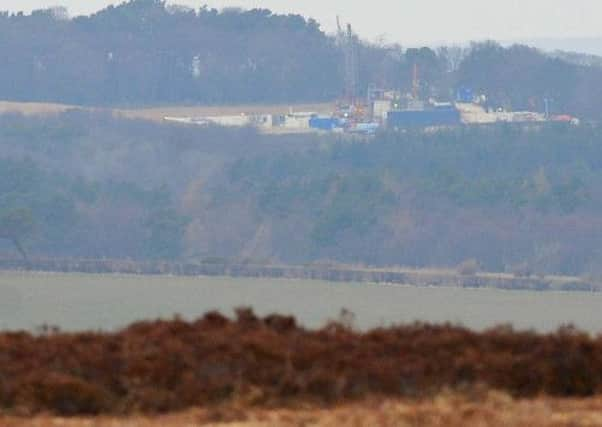Industrial intrusion on Wainwright’s ‘glimpse of heaven’


When Alfred Wainwright pioneered his coast to coast walk in 1972, plans were afoot to turn the head of Farndale, skirted by the walk in the North York Moors, into a huge reservoir
In his guidebook, Wainwright remarked: “It seems unbelievable as you walk along and look down at the tranquil loveliness that there are men with souls so dead, with visions so clouded, with appreciation of natural beauty so withered, that they actually scheme to flood the valley. You simply can’t credit it, can you?”
Advertisement
Hide AdAdvertisement
Hide AdThe reservoir threat was defeated. But it’s hard not to believe that if Wainwright returned to his coast to coast walk today he would be dismayed – to put it no higher than that – by the plan to establish a potash mine close to his route, as it nears its climax.
For that is what the York Potash scheme entails. Eschewing a direct route to the coast from Grosmont, Wainwright takes his walk on a large loop. The scenic highlight until the cliffs themselves are reached is the almost-hidden valley of Littlebeck, whose eponymous hamlet Wainwright hails as “a miniature Arcadia embowered in trees, a glimpse of heaven for nerve-frayed town dwellers”. He adds that his route there adopts a new forest trail, “a popular innovation,” centred on Falling Foss waterfall “in surroundings of bewitching beauty”.
But the point where the coast to coast walk emerges from the valley on to the main local road – the B1416 – is a mere half mile or so from the intended mine. Nor will the mine’s closest feature be an empty corner but what looks like its HQ – the so-called “mine support building and visitor centre”.
Augmented by new planting, existing conifer plantations will screen the mine, but it is difficult to imagine that the presence of a major industrial operation, spread over 247 acres and expected to employ at least 1,000 people, will not be evident to visitors in this vicinity, including coast to coast walkers.
Advertisement
Hide AdAdvertisement
Hide AdThe additional traffic alone, perhaps even spilling on to the local lane, just across a small valley from the mine, which Wainwright identifies as the shortest route to Hawsker, last place before the cliffs, seems bound to alter the character of the area.
A decision of the mine’s fate could now be delayed until next year after the company behind the plans, Sirius Minerals recently asked the North York Moors National Park Authority to defer any decision to allow it more time to ensure the development would not harm the environment.
The authority had been due to consider the company’s planning application today, but the company has sought more time to deal with a number of issues relating to its environmental impact.
What is clear is that should the mine go ahead it would bring employment to the area. But would Wainwright welcome the mine as a provider of jobs? It’s true he found Swaledale’s abandoned lead mines “fascinating” though “ugly”.
Advertisement
Hide AdAdvertisement
Hide AdHe also admired the former Rosedale Railway, the standard-gauge line over the roof of the North York Moors, arguing that its clanking freight trains “brought a pulse of life to the wilderness”.
But Fylingdales warning station moved him in the opposition direction. He denounced it as “a seemingly ludicrous apparition, especially when the larks are singing”.
Well, few, if any, larks will sing over the potash mine. Perhaps worth remembering that the inspiration for Wainwright’s walk was its passage through unspoilt countryside virtually all the way. Referring to its start and finish – St Bees Head and Robin Hood’s Bay – he observed: “If a ruler is placed across the map between these two points it will be seen at a glance that that grandest territory in the north of England is traversed by it; two thirds of the route lies through the areas of three national parks.”
Wainwright emphasised that the countryside visited was “beautiful almost everywhere”. The only named exception was the Vale of Mowbray, the intensively-farmed area between the Dales and the Moors.
Advertisement
Hide AdAdvertisement
Hide AdWhether Wainwright would have altered his walk to steer well clear of the proposed potash mine we’ll never know. But the mine developers themselves call it a “transformative” project.
Wainwright surely would have felt that the experience of his walk – that “glimpse of heaven for nerve-frayed town dwellers” would be diminished by the intrusion of an industrial landscape just where walkers gird themselves for the grandstand finish along Yorkshire’s magnificent cliffs.